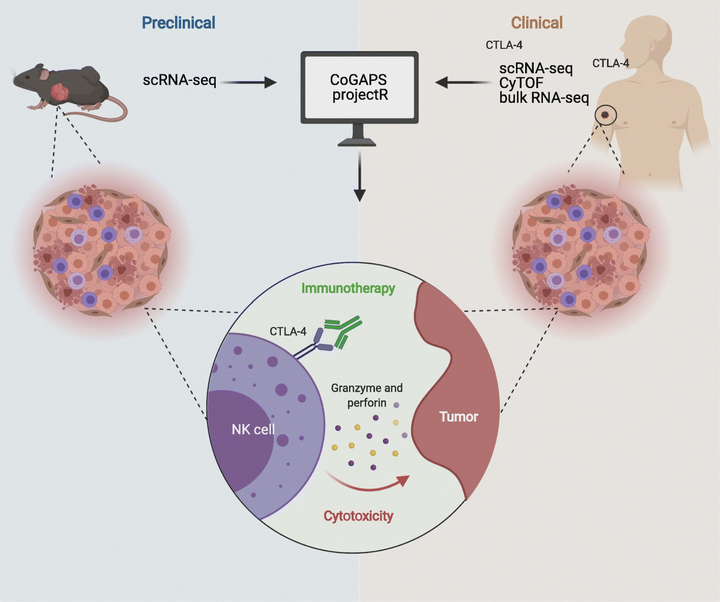Transfer learning between preclinical models and human tumors identifies a conserved NK cell activation signature in anti-CTLA-4 responsive tumors

Abstract
Tumor response to therapy is affected by both the cell types and the cell states present in the tumor microenvironment. This is true for many cancer treatments, including immune checkpoint inhibitors (ICIs). While it is well-established that ICIs promote T cell activation, their broader impact on other intratumoral immune cells is unclear; this information is needed to identify new mechanisms of action and improve ICI efficacy. Many preclinical studies have begun using single-cell analysis to delineate therapeutic responses in individual immune cell types within tumors. One major limitation to this approach is that therapeutic mechanisms identified in preclinical models have failed to fully translate to human disease, restraining efforts to improve ICI efficacy in translational research. We previously developed a computational transfer learning approach called projectR to identify shared biology between independent high-throughput single-cell RNA-sequencing (scRNA-seq) datasets. In the present study, we test this algorithm’s ability to identify conserved and clinically relevant transcriptional changes in complex tumor scRNA-seq data and expand its application to the comparison of scRNA-seq datasets with additional data types such as bulk RNA-seq and mass cytometry. We found a conserved signature of NK cell activation in anti-CTLA-4 responsive mouse and human tumors. In human metastatic melanoma, we found that the NK cell activation signature associates with longer overall survival and is predictive of anti-CTLA-4 (ipilimumab) response. Additional molecular approaches to confirm the computational findings demonstrated that human NK cells express CTLA-4 and bind anti-CTLA-4 antibodies independent of the antibody binding receptor (FcR) and that similar to T cells, CTLA-4 expression by NK cells is modified by cytokine-mediated and target cell-mediated NK cell activation. These data demonstrate a novel application of our transfer learning approach, which was able to identify cell state transitions conserved in preclinical models and human tumors. This approach can be adapted to explore many questions in cancer therapeutics, enhance translational research, and enable better understanding and treatment of disease.